This Week in Anime
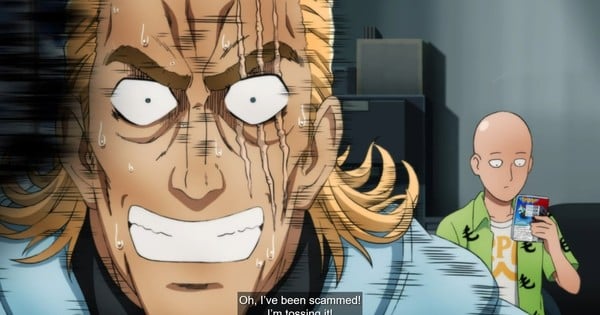
Steve and Chris compare some of the highs and lows of an anime studio change-up, from Attack on Titan and One-Punch Man to Spice and Wolf.
Disclaimer: The views and opinions expressed by the participants in this chatlog are not the views of Anime News Network.
Spoiler Warning for discussion of the series ahead.
Laid-Back Camp, Uma Musume, Don’t Toy with Me, Miss Nagatoro, Attack on Titan, Spice and Wolf, and Spice and Wolf: Merchant Meets the Wise Wolf are available on Crunchyroll. One-Punch Man is streaming on Hulu, and BanG Dream! is on HIDIVE except for season 1.
Steve
Chris, you can go ahead and start the column without me this week. I fell through a tesseract into an alien plane of existence. The Voices won’t let me leave until I get a good campfire going or until the alternate and unknowable physics of this dimension reject my corporeal form like a pathogen. I shouldn’t be long, though.

Chris
Good to know. I’ll stock up on some supplies for when you get back. Was there anything you needed from the bizarrely photorealistic and subtly out-of-scale store?

If they have one of those Stanley cups with extra lead, that would be sweet.
Come on, you know I can’t convince Lynzee to sign off on expensing that kind of decadence! I guess we’ll have to forage for our lead out in the wilderness, like in the good old days.

Good news! Like Prometheus, I have wrought fire from the darkness and forged a guarantee of my own continued existence for one more day. The struggle rages on eternal. Also, by the by, what’s the deal with anime sequels that switch up studios?

Sometimes, creative setups shake out such that the team that worked on an anime in its earlier iterations can’t or won’t return to it. But a successful franchise is what it is, so what’s a production committee to do but bring in a replacement? Such is the situation we find ourselves in with this season’s third round of Laid-Back Camp-ing. Fortunately, as these things always are, the transition has been seamless!
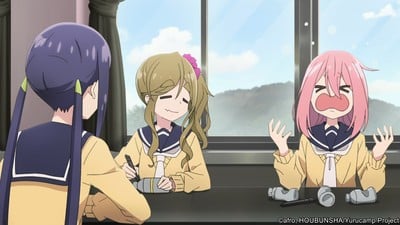
If I know one thing about humanity, it is that we love change and are extremely normal about it at all times.
But yes, while the old studio swap isn’t a new phenomenon by any means, the third season of Laid-Back Camp is a fresh and easily noticeable example, so it’s a good springboard into this topic. Here are the basics. The first two seasons were handled at C-Station under the direction of Yoshiaki Kyougoku to much fanfare (including from yours truly). This third season is being handled by 8-Bit with director Shin Tosaka. In other words, we have two complete teams handling the same source material. Among other things, I think this provides an excellent opportunity to look more closely at how the anime sausage gets made.
Incidentally, a topic this season of the show has already enthusiastically covered.


Though thankfully, after news of the creative team transfer caused all that initial consternation (including from yours truly), I think this new flavor of Laid-Back Camp sausage hasn’t turned out as unfortunate as Aki’s attempt.

I agree! At the end of the day, it’s still Laid-Back Camp. I tune in for comfy outdoor activities, which I’ve been getting each week. The continuity of the voice actors and the soundtrack also helps bridge the gap a lot. Much of this season has been about bridges.

Some bridges, however, are rockier than others.

Given the state of some of those bridges, I was going to say that might not be the most effective metaphor for the continuity between these different versions of Camp.

Though either 8-Bit has settled into producing the show six weeks in, or I’ve just gotten acclimated to it by this point, Laid-Back Camp Season 3 has mostly been hitting for me. Still, there was some shock in those initial couple of episodes. The photo-based backgrounds and the thinner-outlined characters composited on top looked rough. More than anything, it threw off the vibes, and in an iyashikei series like this that’s nothing but vibes, that will be noticeable.
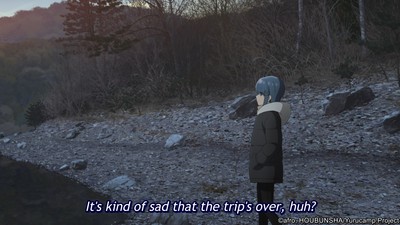
Yeah, the compositing remains the biggest point of consternation for me. The quality varies from scene to scene, so I admit it’s unfair to pit one of this season’s worst examples against an average shot from the first two seasons, but when it’s bad, it’s bad. Just look at how all of the details of Mt. Fuji distract in the first example here, compared to the more natural blending present in the second.


Like, the first two seasons used a lot of photo references and filters too, but their compositing had an indisputably subtler touch.

I keep thinking about the last time we spent with C-Station‘s iteration of the series, in the Laid-Back Camp Movie (the time-skipped future setting of which at least made a respectable send-off for that version). That was a movie where I couldn’t stop snapping shots of the various scenery, even the plain, earthy stretches comparable to Season 3‘s more characteristically muted looks.


By contrast, most of the time I capped a shot of a landscape from this season, I was doing so just because I knew I’d need comparative column fodder.

The presence of the movie makes this studio change especially interesting to me. Like you said, it was a time skip that didn’t happen in the manga, so this was an anime-original story and film that, from a production committee’s standpoint, didn’t have to be made. Maybe I’m reading too much into it, but I’m inclined to think that this means it was a deliberate creative decision on the C-Station team’s part to turn down the third season. Maybe they felt like they did all they could with the material and put together the film as their special farewell to the series. It works pretty well as one, honing the series’ relaxing and reflective parts.


And if that’s the case, it’s hard to have any regrets about C-Station not following through on the third season. It seems like they accomplished everything they wanted to.
It’s bittersweet but fair. C-Station isn’t a studio with a ton of series to their name. But I’m still curious to see what they might do next after moving on from Laid-Back Camp, which they (and director Yoshiaki Kyogoku) were so instrumental in defining the look and feel of, anime-wise.
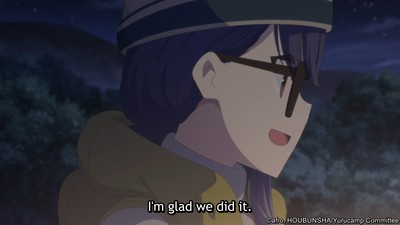
Meanwhile, I need to stress that, with lesser scenery and compositing aside, 8-Bit‘s third season of Laid-Back Camp is not bad. It feels like they’re starting to come into their own as the studio behind Encouragement of Climb gets a handle on this other flavor of outdoor adventures. Regarding other aesthetic switches, it is disappointing that Eri Sasaki isn’t singing the ending theme for this one, but that’s down to some current health issues.

Most of the aesthetic swerves have softened as I’ve gotten used to them, which is what I figured would happen. 8-Bit is not phoning anything in; they have a different style that results from their unique personnel and pipelines. So what if they made Rin’s eyes a little droopier? I can live with that.


As someone who also enjoys picking up on art style idiosyncrasies, I can understand why fans were concerned that the Laid-Back Camp hand-off wouldn’t go as decently as it has. Studio shuffles in anime can often be associated with diminishing returns for what made an initial entry feel so special. Just ask One-Punch Man anime fans.

Oof, yeah, that was a rough landing. Although, to be perfectly fair, season one of One-Punch Man was such a singular sakuga extravaganza that almost no other production could hope to live up to it. I don’t even want to think about all the logistics that went into making that adaptation so eye-popping. All the connections and favors that Shingo Natsume and his team probably had to call in. Even if it had stayed in-house at Madhouse, that would be a tough act to follow in the best of circumstances.
One-Punch Man makes for an effective go-to example, but it’s also a pretty special case. As strong as One and Yūsuke Murata‘s original material was, many people liked the anime specifically for the spectacle. Even if the refreshed crew with J.C. Staff earnestly wanted to continue effectively adapting that story, the general audience would never see it as anything other than a cheap, imitative cash-grab.

It’s a shame because I liked the second season’s arc more than the first. But the presentation was, to put it bluntly, worse. And in baffling ways sometimes. Take Genos from season one, for example. He looks like he belongs in this scene, right? Just a normal robot guy.

Right, a conventionally attractive mech.
Now here’s season two Genos. Look what they’ve done to my boy. Why have they rendered his armor like a background prop in a ’90s FMV game? Why is it so shiny? It doesn’t mesh with anything else on the screen. It doesn’t look natural. It’s so distracting.


The first season of One-Punch Man sometimes paused the story so you could gawk at the visuals. Here, you’re still gawking, but not in a good way, and that story’s all it has left. If that sets the tone for viewers on this sort of thing, it’s not fair. This kind of changeover often isn’t nearly as drastic a difference as this infamous example. For instance, Uma Musume switching from P.A. Works to Studio KAI mostly seemed like a lateral move. And if Kai’s running animation wasn’t quite as intense, the second season got buoyed by telling a stronger story.

The second season gave us Rice Shower. I am physically and psychologically incapable of complaining about it.
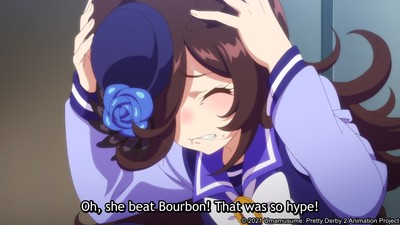

Uma Musume also retained some of its core staff across the studio change, including its director, so that helped mitigate the differences.
That’s another point: studios as entities aren’t responsible for all the changes and quality shifts in anime—it’s people who make it that matter. Some fundamental changes can be noticeable. Don’t Toy with Me, Miss Nagatoro lost its original director, Hirokazu Hanai, when it jumped from Telecom Animation Film to OLM for its second season but retained the rest of its core staff. So, while it looked a bit cheaper overall, the second season still maintained much of the base tone and style of the first effort.


Though I’d be lying if I said I didn’t mourn the loss of Nagatoro’s more meticulously rendered canines.
Meanwhile, Attack on Titan went through at least three directors and two studios, although that’s more understandable given its decade-long run. And given the evolving scope of the series, including the rather important jump in perspective between the last season at Wit and the “final” season at MAPPA, those aesthetic changes weren’t necessarily deleterious.

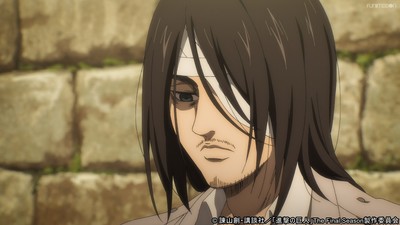
That’s one to think of when considering the more lateral studio moves anime have made. Disregarding any gripes about the CG Titans of The Final Season, MAPPA is (or was) seen as enough of a powerhouse that this wasn’t considered a cheap-out or a downgrade. Especially with the original studio Wit moving on to pad more of their resume with additional hits like Vinland Saga. Which also wound up being handed off to MAPPA. Hm.

Okay, we probably don’t need yet another column on MAPPA‘s business practices, but those examples speak for themselves.
Hey, pure positivity can also come out of these sorts of switch-ups! Sometimes, the follow-up studio winds up putting their stamp on a series, making a name for both it and them. For instance, I’m pretty sure virtually nobody remembers ISSEN and Xebec‘s 2D first season of BanG Dream!, since these days the franchise is so closely associated with SANZIGEN and their increasingly impressive 3D CGI work.

I genuinely forgot that they had that 2D season. I guess I got distracted by…other things…
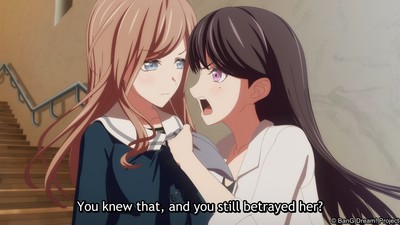

They are genuinely almost two completely separate series! Except you’ve still got the star-shaped girl who headlined that old cel-animated show around to hand the mic off to this new, angstier, more three-dimensional band of girls.
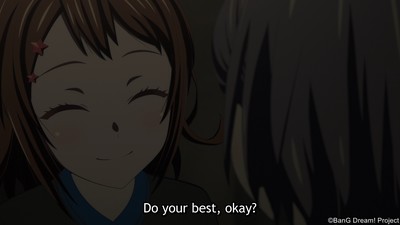
Of course, Yuniko Ayana still wrote the entire run from there to here, so there’s that point about the people making these things, regardless of studio, again.
The road to making an anime, especially a long-standing series, is rarely a straight line. Another pertinent example from this season is Spice & Wolf! Now, Merchant Meets the Wise Wolf is technically a reboot, not a sequel, but I think it still fits the spirit of the issue given its intent to adapt past where the original two seasons left off.

It also occupies an interesting eye in the vortex of many of the factors we’ve discussed here. It’s a new studio doing the adaptation, but with the same director in the seat handling this same material as before. This means it’s the perfect choice to see how much impact a studio itself has.
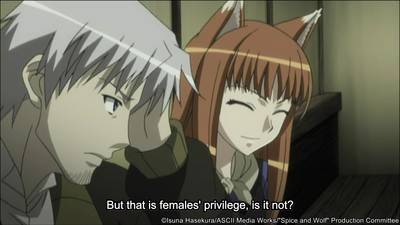

This is also not even the first time that Spice & Wolf has changed studios. IMAGIN handed off the show between the first and second seasons to Brains Base and Marvy Jack. While Takeo Takahashi remained the director in that situation, it also came with a noticeably different and softer style.


It is all appropriate enough for a series centered around an amicable shapeshifter.
Incidentally, Spice & Wolf was IMAGIN‘s last foray into TV anime, and they have since gone on to nearly exclusively make hentai OVAs, so maybe they decided their talents were best applied elsewhere.
Oh, NOW I’m realizing why the style on the 2007 show felt so retroactively recognizable! Wait, I mean-

Though, that’s amusingly compounded by Merchant Meets the Wise Wolf being animated by Passione, whose own oeuvre trends towards…well, let’s just say I primarily clocked their style here by the way the studio behind Interspecies Reviewers and Harem Labyrinth drew naked Holo.

Who else are you going to trust when there’s a nude wolf goddess to animate?

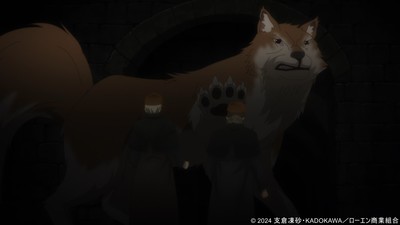
Okay, wait, I didn’t mean like that.
Lawrence is about to supplement his merchant income with a very furry guest column with the Interspecies Reviewers.
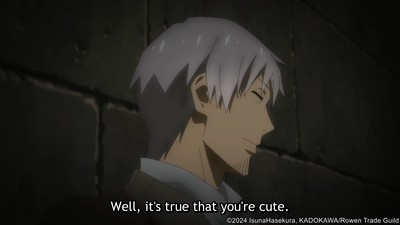
We make our lowbrow jokes, but that does work as an example of how different studios’ approaches can prioritize and dictate different outputs on an anime. Even as Spice and Wolf 2024 remains a nearly shot-for-shot remake of the original, the framing of those shots and the way the artists compose them speaks to the specificities of those artists’ appeals. To say nothing of how tastes have evolved with time.

It makes for a fascinating case study. There are parallel episodes where you can compare/contrast how Takahashi storyboarded the same scene across the 15+ year gap, or you can take notes on how the voice actors tackle the dialogue differently. It helps you appreciate all the minute creative decisions that go into even the most mundane of scenes.
Of course, there are more obvious points of comparison, like the design of Holo’s wolf form. This scene caused some of the loudest hemming and hawing I’ve heard about the show from casual viewers.
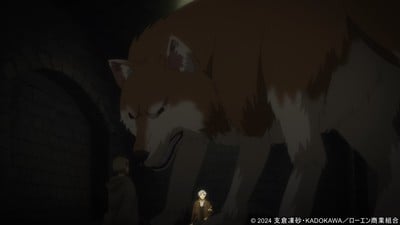

Far apart from different storyboarding choices and the inherent difference in art styles, the differences in Holo’s furry form highlight those differences in approach between the two versions. That more angular look to the original lends itself to a more menacing fantastical abstraction. On the other hand, the new version has consistently been going for denser, finer detailed realism.

I don’t know which one is “better,” but I know which one I prefer in terms of conveying the vibe of that form within the story’s world. Is that on the same level as dismissing 8-Bit‘s backgrounds in Laid-Back Camp because they’re going for a different vibe than C-Station‘s? Maybe not quite, but it makes for salient consideration all the same.
The point I’d glean from all of this is that there are arguments to be had, but answers are much more elusive. And it’s case by case, too. I’m sure some studio changes happen because the producers shop around and find the cheapest bidder, but I’d say it’s probably more common for these situations to be more nuanced than that. While it’s natural—perhaps even logical—to be apprehensive about a studio change, the proof will ultimately be in the pudding. Or, in Laid-Back Camp‘s case, the proof may be in any foods that Nadeshiko shoves down her gullet.

To put those theories to the test, I propose they experiment more with changing productions and styles. Laid-Back Camp Season 4 should be entirely footage of that mascot Shimarin that keeps crossing my social media feed. I’d watch a year-long run of that.
予告なしできぐリン登場☺️ pic.twitter.com/q6sJlT76oe
— ぴよすけ△ (@piyo_yurucamp) May 11, 2024
I, for one, welcome our new and impressively round Shimarin overlord. At least until she gets stuck in a doorway, that is.

